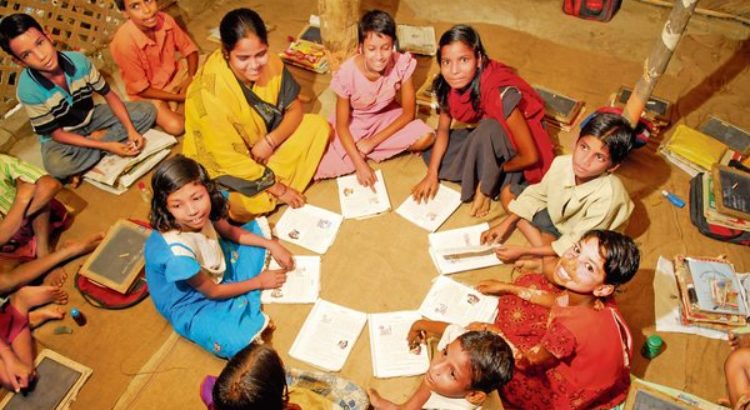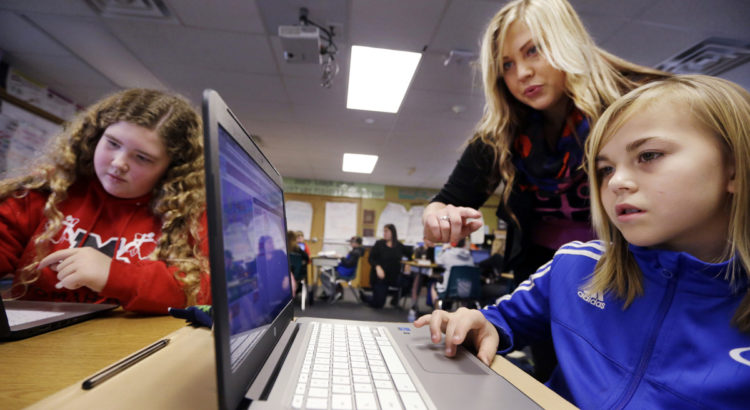By: Louis Fourie.
History has proven that education is one of the most powerful tools to drive positive social, economical and technological change, and, therefore, create a more prosperous future for a country.
In South Africa many approaches to enhance the educational experience and quality have been tried in the past, but none of them were dramatically successful in improving the results of students, giving them greater access to post-school studies or enhance their employability.
There is a constant drive for educational policy change at national level, yet the attempts generally seem to be perennially futile. We have tried the appointment of more teachers, pedagogical methodologies that did not work elsewhere, and instructional designs that are outdated in the Fourth Industrial Era.
Perhaps the answer (partly) lies in technology. In our endeavours to increase the access and quality of education in South Africa, the Internet of Educational Things (IoET) may provide the much needed support. Historically, technological innovations and enhancements have improved the quality of and access to education all over the world.
In particular the Internet has had a profound impact on teaching and learning. Due to the many free online resources such as Massive Open Online Courses from leading institutions such as Harvard and MIT it is possible to take a class at home.
High school learners can access the rich sources of the Khan Academy and digital encyclopedias. Almost any skill or theory can be learned via YouTube and TED.
It is possible to find an online tutor for a child in any subject for a reasonable amount and children can even (illicitly) outsource their mathematics homework and other assignments to an unknown person on the Web.
But the Fourth Industrial Revolution (4IR) has not left education untouched. The Internet of Things (IoT), one of the building blocks of the 4IR, is an important innovation to create smart learning environments in schools and universities.
The IoT can improve the education system and can also add value to the face-to-face teaching environment and to structured learning.
The IoT makes it possible for schools to implement an unparalleled number of systems and methods that could enhance the abilities of students. It also revolutionises classroom dynamics, from primary school to university education.
The IoT, with its inherent connection of numerous devices and people to the Internet, will significantly transform our learning processes, as is evident from recent research that confirmed the educational potential at lower grade levels of the IoET devices.
Dr Jim Ang and his team from Kent University in the UK investigated how IoET technology could be effectively designed and used to support education in primary schools in rural Northern Thailand.
They developed a bespoke IoET platform called “Observation Learning System” (Obsy) that made the learning process more “real, local and fun”.
The toy-like Obsy device was based on the inexpensive Raspberry Pi mini computer and had several ports to which the learners could connect environmental sensors to measure ambient light and temperature. The recorded data was then transferred wirelessly to the tablets of the children. The Obsy was specifically designed to look like a toy to rouse the curiosity of the children and to minimise any possible technology anxiety or distrust.
At the back-end the system consisted of an IoET platform, which processed the context of learning activities, how the experiments have been carried out, as well as the results, allowing for improvements.
The children had to undertake three science-based learning activities with the aim of improving their understanding of certain science processes while simultaneously learning to work in teams.
They had to study the growth of mould in different conditions; learn about the factors that influence the growth of mushrooms; and determine how much light can pass through different objects by taking photos or videos, monitoring temperature changes, and measuring the amount of light with the Obsy device.
All the information that was wirelessly transmitted to their tablets, visualised in the form of graphs to assist the learners in making comparisons of the results and also in understanding how different conditions can lead to different results.
The device not only encouraged observation, but also invited students to share their results with the rest of their classmates.
From the research in Thailand, the researchers were able to demonstrate that the children using the IoET device had a significant higher learning engagement and obtained better scores than a control class that undertook the same experiments without the use of the Obsy device.
The current growth in the IoT has the potential to cause a move towards a new class of ubiquitous learning applications that rely on inexpensive sensors, edge devices, IoT middleware, and web-based protocols like HTTP to enable innovative ubiquitous and personalised learning designs in language and social sciences learning, science and technology learning, and domain independent learning.
Through the confluence of physical objects with the digital world, IoT allows the development of new hybrid systems. One solution is the powerful combination between Virtual Reality (VR) and IoT that was researched by Mohamed Fahim and others in Morocco.
IoT makes physical objects part of the virtual and digital environment, while VR makes digital environments seem realistic. Due to the increase in learners and shortage of physical resources in Morocco, the researchers resorted to VR and the IoT to create a credible virtual learning space where the learners could perform practical activities like in the real world – in this case the measurement of ultrasonic velocity in the air.
Thirty students were randomly divided into an experimental and a control group. A post-test revealed that the experimental group using the learning system based on IoT and VR were significantly better than the control group who only had a theoretical course.
Fourteen learners in the experimental group averaged 93.3percent, while the control group averaged between 46.7 and 53.3percent in the test.
The study indeed indicated that IoT and VR could widen the possibility for innovations in the teaching and learning, especially by creating a virtual environment where the learner is an active participant that can “learn by doing”, through the interaction with the 3D virtual objects.
An educational environment based on VR and IoT can further solve the problem of the equipment/product insufficiency often experienced by institutions. Such an environment can provide learners with a rich, interactive learning experience where they can perform tasks safely; participate in learning situations that require repetition; and participate in learning situations that are too expensive to implement in the real world.
It is evident that IoET technology in the classroom can bring major educational benefits. It can significantly improve learning outcomes and participation and allows learners to grasp more complex concepts.
Given the high percentage of children and students with smart phones in South Africa, the smart phones with their various sensors could easily be integrated into the learning activities of schools.
Learners live in a world where digital devices constitute a vital part of their daily lives.
It is time that the educational system harnesses this proficiency of students in the use of modern tools in order to stimulate their appetite for learning and their understanding of complex concepts.
Educational institutions can benefit greatly by using IoT in their regular educational activities. Perhaps the biggest problem is not the readiness of the students, but the readiness of the teachers.
Source of the article: https://www.iol.co.za/business-report/opinion/opinion-technological-innovations-have-improved-quality-of-education-26220202
FT企画・インターナショナルスクール20190617201451744_Datare-750x410.jpg)












 Users Today : 37
Users Today : 37 Total Users : 35460420
Total Users : 35460420 Views Today : 72
Views Today : 72 Total views : 3419235
Total views : 3419235